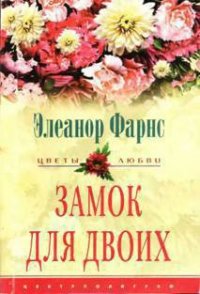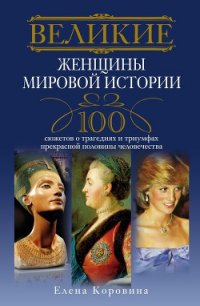Как выжить женщине в Средневековье. Проклятие Евы, грех выщипывания бровей и спасительное воздержани - Янега Элеанор
Там же, 115–22.
Walter Mettmann, “ ‘Ancheta de caderas.' Libro de buen amor, C. 432 ss,” Romanische Forschungen 73, nos. 1–2 (1961): 141–47; and Michael Ray Solomon, trans., The Mirror of Coitus: A Translation and Edition of the Fifteenth-Century “Speculum al foderi” (Madison: Hispanic Seminary of Medieval Studies, 1990), 8.12.
Luce Lopez-Baralt, “La bella de Juan Ruiz tenia los ojos de huri,” Nueva Revista de Filologia Hispanica 40 (1992): 73–83.
Faral, Les ars poetiques, 80.
“Colla nivi..,” там же, 84.
“Succuba sit capitis pretiosa colore columna / Lactea, quae speculum vul-tus supportet in altum.” Geoffrey of Vinsauf, Poetica Nova, ibid., 215 [здесь и далее Гальфред Винсальвский, «Новая поэтика», цит. по «Проблемы литературной теории в Византии и латинском Средневековье», ответ. ред. М. Л. Гаспаров; «Наука» М.: 1986; электронный ресурс: http://biblio. imli.ru/images/abook/teoriya/Problemy_literaturnoy_teorii_v_Vizantii_i_ latin.pdf, с. 131, строка 588].
См., например, Peter Dronke, Medieval Latin and the Rise of European Love-Lyric (Oxford: Oxford University Press, 1965), 1:193; Matthew of Vendome, Ars Versificatoria, trans. Aubrey E. Galyon (Ames: University of Iowa Press, 1980), 39.
D. S. Brewer, “The Ideal of Feminine Beauty in Medieval Literature, Especially ‘Harley Lyrics,' Chaucer, and Some Elizabethans,” Modern Language Review 50, no. 3 (1955): 260; Anonymous, “Alysoun,” https://rpo.library.uto-ronto.ca/poems/alysoun.
Francisco A. Marcos-Marin, “Masculine Beauty vs. Feminine Beauty in Medieval Iberia,” in Multicultural Iberia: Language, Literature, and Music, ed. Dru Dougherty and Milton M. Azevedo (Berkeley: University of California Press, 1999), 31.
Guillaume de Machaut, “Le Jugement dou Roy de Behaingne,” in Guillaume de Machaut: The Complete Poetry and Music, vol. 1, The Debate Series, ed. R. Barton Palmer, Domenic Leo, and Uri Smilansky, trans. R. Barton Palmer and Yolanda Plumley (Kalamazoo: Medieval Institute Publications, 2016), https://d.lib.rochester.edu/teams/text/palmer-machaut-thedebateseries-bo-hemia, lines 365–66; Chaucer, Troilus, 2.1247, and The Book of the Duchess, lines 953–54.
Geoffrey of Vinsauf, Poetica nova, 215.
Matthew of Vendome, Ars Versificatoria, in Mathei Vindocinensis, Opera, 85.
Там же, 84.
Geoffrey of Vinsauf, Poetica nova, 215.
Machaut, “Le Jugement dou Roy [de Behaingne],” строки 369–70.
Monica H. Green, ed. and trans., The Trotula: An English Translation of the Medieval Compendium of Women's Medicine (Philadelphia: University of Pennsylvania Press, 2001), 85.
Matthew of Vendome, Ars Versificatoria, 85. Machaut, “Le Jugement dou Roy,” строки 373–75.
Matthew of Vendome, Ars Versificatoria, 85.
См., например, Machaut, “Le Jugement dou Roy,” строки 376–77. Matthew of Vendome, Ars Versificatoria, 85.
Geoffrey of Vinsauf, Poetica nova, 215.
Там же.
Machaut, “Le Jugement dou Roy,” строки 377–79.
Из этого правила есть существенные исключения, в особенности касающиеся королевских семейств и высшей знати. Однако эти исключения, безусловно, существенны. Подробнее на темы замужества и девиц см. в Kim M. Phillips, Medieval Maidens: Young Women and Gender in England, 1270–1540 (Manchester: Manchester University Press, 2003), 36–42. M. C. Seymour et al., eds., De puella, in On the Properties of Things: John Trevisa's Translation of Bartholomaeus Anglicus “De proprietatibus rerum”: A Critical Text (Oxford: Oxford University Press, 1975), col. 1, lib. 6, cap. 6, цит. по Phillips, Medieval Maidens, 6–7.
Phillips, Medieval Maidens, 7.
Физиологическую холодность, которую отмечали у женщин в средневековую эпоху, оспаривали многие выдающиеся врачи и натурфилософы. См., например, Pseudo Albertus Magnus, Women's Secrets: A Translation of Pseudo-Albertus Magnus' “De secretis mulierum,” with Commentaries, ed. and trans. Helen Rodnite Lemay (Albany: SUNY Press, 1992), 60–70; Mazhar H. Shah, The General Principles of Avicenna's “Canon of Medicine” (Karachi: Naveed Clinic, 1966), 33–34.
Caroline Walker Bynum, The Resurrection of the Body in Western Christianity, 200–1336 (New York: Columbia University Press, 1995), 122; Mary Dove, The Perfect Age of Man's Life (Cambridge, U. K.: Cambridge University Press, 1986), 21–25.
Malcolm Andrew and Ronald Waldron, eds., The Poems of the Pearl Manuscript (Exeter, U. K., 1987), lines 197–204.
Neu-Karsthans, “Gesprech biechlin neuw Karsthns,” цит. по Michael Baxandall, The Limewood Sculptors of Renaissance Germany (New Haven, Conn.: Yale University Press, 1980), 88.
Anne-Laure Lalouette, “Bains et soins du corps dans les textes medicaux (XIIe–XIVe siecles),” in Laver, monder, blanchir: Discours et usages de la toilette dans l'Occident medieval, ed. Sophie Albert (Paris: Presses de l'Univer-sity Paris-Sorbonne, 2006), 33–49.
Etienne de Boileau, Le Livre des metiers, in Women's Lives in Medieval Europe: A Sourcebook, ed. Emilie Amt (New York: Routledge, 1993), 162. Тот самый денье, от которого происходит современное название пенни, был самой мелкой и самой распространенной монетой. Работникам и слугам в XIII веке обычно платили поденно где-то от полутора до двух с половиной денье, тогда как торговцы и ремесленники в зависимости от своего мастерства могли зарабатывать в день от трех до девяти денье. См. Jeffrey L. Singman, Daily Life in Medieval Europe (Westport Conn.: Greenwood Press, 1999), 61.
Georges Vigarello, Concepts of Cleanliness: Changing Attitudes in France Since the Middle Ages, trans. Jean Birrell (Cambridge, U. K.: Cambridge University Press, 1988), 21–22.
Olivia Remie Constable, “Cleanliness and Convivencia: Jewish Bathing Culture in Medieval Spain,” in Jews, Christians and Muslims in Medieval and Early Modern Times, ed. Arnold E. Franklin et al. (Leiden: Brill, 2014), 257–58.
О сохранившихся хамамах см., например, в Catherine B. Asher, “The Public Baths of Medieval Spain: An Architectural Study: Cross-Cultural Contacts,” в The Medieval Mediterranean: Cross-Cultural Contacts, ed. Marilyn J. Chait and Kathryn L. Reyerson (St. Cloud, Minn.: Northstar Press, 1988); О подозрениях мужчин в адрес банных привычек женщин см. у Alexandra Cuffel, “Polemicizing Women's Bathing Among Medieval and Early Modern Muslims and Christians,” и в The Nature and Function of Water, Baths, Bathing and Hygiene from Antiquity through the Renaissance, ed. Cynthia Kosso and Anne Scott (Leiden: Brill, 2009).
Kevin M. Dunn, Caveman Chemistry: 28 Projects from the Creation of Fire to the Production of Plastics (Irvine, Calif.: Universal, 2003), 233.
Hildegard of Bingen, Hildegard von Bingen's Physica: The Complete English Translation of Her Classic Work on Health and Healing, trans. Priscilla Throop (Rochester, Vt.: Healing Arts Press, 1998), ch. 4.
Monica H. Green, ed. and trans., The Trotula: An English Translation of the Medieval Compendium of Women's Medicine (Philadelphia: University of Pennsylvania Press, 2001), 115.
Там же.
Geoffrey de La Tour Landry, Le Livre du Chevalier de La Tour Landry pour l'enseignement de ses filles, ed. Anatole de Montaiglon (Paris: P. Jannet, 1854). Английский перевод см. в Geoffroy de La Tour Landry, The Booke of Thenseygnementes and Techynge that the Knyght of the Towre Made to his Doughters, trans. Gertrude Burford Rawlings and William Caxton (London: G. Newnes, 1902).
Jan Milíč of Kroměříž, “Sermon on the Last Day of the Lord,” in The Message for the Last Days: Three Essays from the Year 1367, ed. Milan Opočenský and Jana Opočenská (Geneva: World Alliance of Reformed Churches, 1998), 49. Bernard P. Prusak, “Woman: Seductive Siren and Source of Sin? Pseude-pigraphal Myth and Christian Origins,” in Religion and Sexism: Images of Women in the Jewish and Christian Traditions, ed. Rosemary Radford Ru-ether (Eugene, Ore.: Wipf and Stock, 1998), 89–116.




